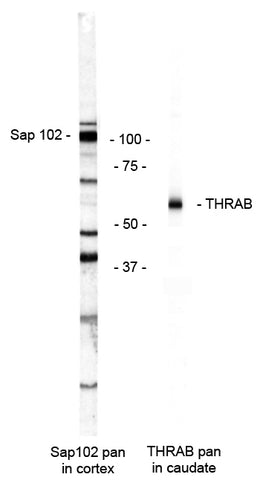The phrase "Does not work in Western blots" usually means that the antibody cross-reacts with multiple proteins.
Contributed by Mike Browning
What does it mean when an antibody company says an antibody “does not work” in western blots?
I started wondering about this question the other day after a colleague told me about a company that “validates” all of their antibodies by immunostaining in no less than 5 different tissues! We examined the company’s website and in some cases western blots (WB) showing labeling of a single band were also presented. But for the vast majority of products on the site only the apparently innocuous phrase “does not work in WB” was seen. What does this mean? I think for many antibody users (especially people who do not do WB and use various immunostaining protocols like IF or IHC) this failure to “work” in WB is often interpreted as meaning something akin to “don’t worry about the WB data, see how well the antibody ‘works’ in immunostaining?!?”
Crossreactivity in WB can mean big trouble for immunostaining.
Any user of an antibody that “does not work in WB” should be very worried indeed. This is because in the overwhelming majority of cases “does not work in WB” means the antibody labels many different proteins in a WB. This can mean that it also labels many different proteins in immunostaining. It is extremely rare to get an antibody that labels nothing in a WB.
An antibody that shows multiple bands in WB indicates lack of specificity for only one protein.

Examples of antibodies that do and do not work in WB are shown in Fig. 1. The lane at the right shows staining of a brain lysate with an antibody raised against tyrosine hydroxylase (TH) and it shows labeling of a single band at MW 60,000 which is the approximate MW of TH. The lane at the left shows staining of an antibody that does not work in WB. The antibody shown was raised against Sap 102 protein. As can be seen in the image of the WB, the antibody does recognize a band at the appropriate MW for Sap 102, but the antibody also recognizes many other bands as well. This antibody "did not work in WB" and it was thrown in the trash where it belonged.
So remember when you read the words “does not work in WB” you should translate that as “this antibody probably cross reacts with a number of different proteins.”
Further Reading:
SDS-PAGE Demystified – The Science Behind All Those Bubbles!
Are Monoclonal Antibodies Really More Specific?

